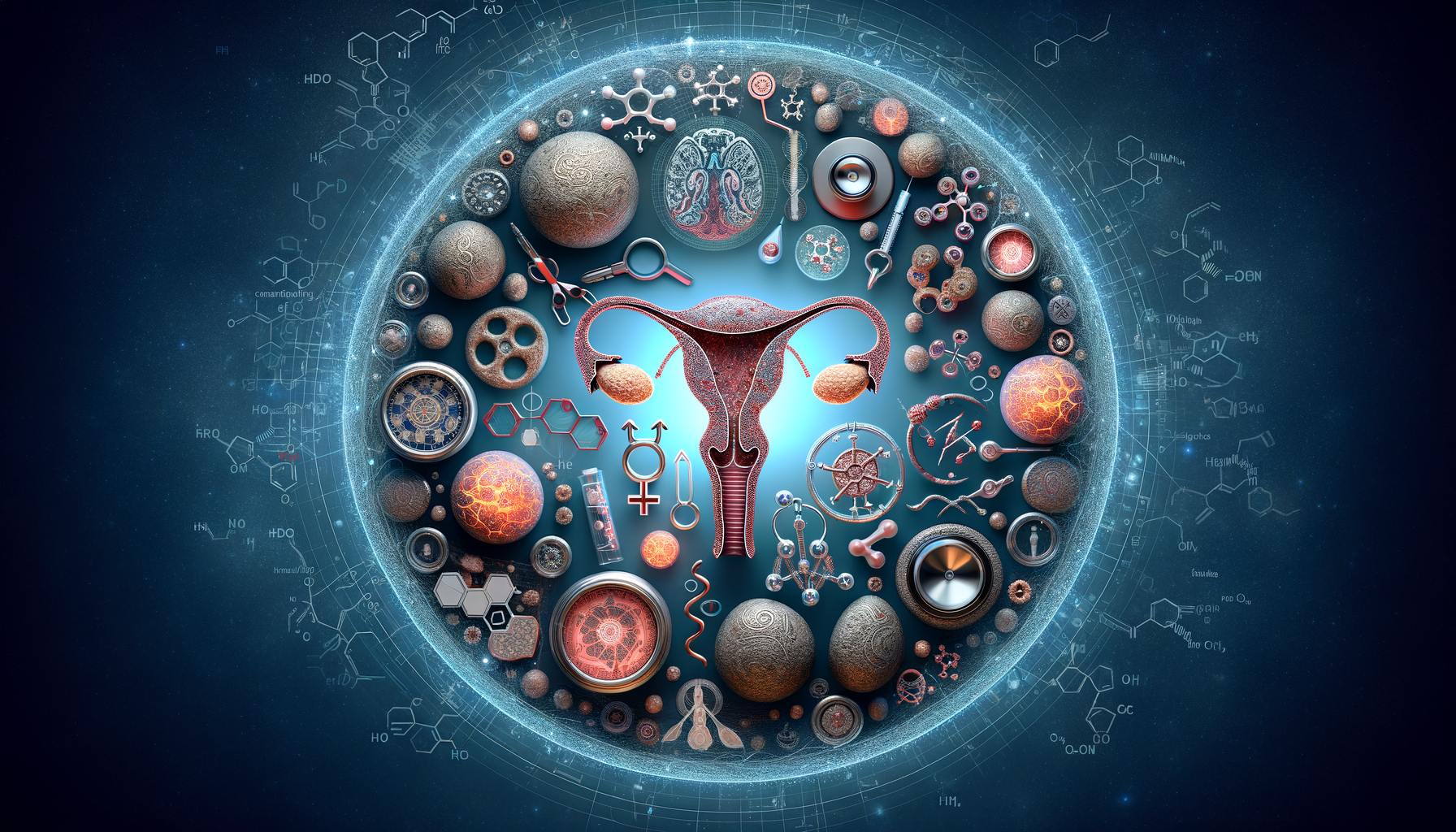Understanding Congenital Adrenal Hyperplasia (CAH)
Congenital Adrenal Hyperplasia (CAH) is a group of genetic disorders that affect the adrenal glands, which are responsible for producing vital hormones such as cortisol and aldosterone. In individuals with CAH, these glands produce an excess of androgens, leading to various health issues. CAH is typically diagnosed at birth or in early childhood, but its effects can persist throughout life, particularly in women, who may experience unique gynecological challenges.
CAH affects about 1 in 10,000 to 1 in 15,000 people worldwide, making it a relatively rare condition. However, its impact on individuals and families can be profound. The disorder is usually inherited in an autosomal recessive pattern, meaning both parents must carry a copy of the mutated gene for a child to be affected. Symptoms can vary widely depending on the severity of the enzyme deficiency, with classic CAH being more severe and non-classic CAH often presenting milder symptoms.
For women, CAH can lead to symptoms such as irregular menstrual cycles, excessive hair growth, and fertility issues. Understanding these symptoms and their implications is crucial for managing the condition effectively. Healthcare providers often recommend a combination of hormone replacement therapy and regular monitoring to help manage symptoms and improve quality of life.
The Gynecological Implications of CAH
Women with CAH may face several gynecological challenges due to the hormonal imbalances caused by the condition. One of the most common issues is irregular menstrual cycles, which can complicate family planning and affect overall health. Additionally, the excess production of androgens can lead to hirsutism, a condition characterized by excessive hair growth in areas where men typically grow hair.
Fertility can also be a concern for women with CAH. The hormonal imbalances can interfere with ovulation, making it difficult for some women to conceive. However, with appropriate medical intervention, many women with CAH can achieve successful pregnancies. Treatment options may include hormone replacement therapy and fertility treatments to aid in conception.
Regular gynecological check-ups are essential for women with CAH to monitor their reproductive health and address any issues promptly. Healthcare providers can offer guidance on managing symptoms and maintaining a healthy lifestyle to support overall well-being.
Managing CAH: Treatment and Lifestyle Considerations
Managing CAH requires a comprehensive approach that includes medical treatment and lifestyle adjustments. Hormone replacement therapy is often the cornerstone of treatment, helping to balance hormone levels and alleviate symptoms. This therapy typically involves glucocorticoids to replace cortisol and, in some cases, mineralocorticoids to address aldosterone deficiency.
In addition to medication, lifestyle changes can play a significant role in managing CAH. A balanced diet and regular exercise can help maintain a healthy weight and reduce the risk of complications associated with the condition. Stress management techniques, such as mindfulness and relaxation exercises, can also be beneficial, as stress can exacerbate symptoms.
Support from healthcare professionals is crucial in developing an effective management plan. Regular monitoring and open communication with a medical team can help address any changes in symptoms and adjust treatment plans as needed. Support groups and counseling may also provide emotional support and valuable resources for individuals and families affected by CAH.
The Importance of Early Diagnosis and Intervention
Early diagnosis and intervention are critical in managing CAH effectively. Newborn screening programs have significantly improved the early detection of CAH, allowing for prompt treatment and better outcomes. Early intervention can prevent severe complications and improve quality of life for affected individuals.
For families with a history of CAH, genetic counseling can provide valuable insights into the risk of passing the condition to future generations. Understanding the genetic aspects of CAH can help families make informed decisions about family planning and seek appropriate medical care.
Continued research and advancements in genetic testing are paving the way for more personalized approaches to managing CAH. By identifying specific genetic mutations, healthcare providers can tailor treatment plans to the individual needs of patients, improving the efficacy of interventions and reducing the risk of complications.
Conclusion: Navigating Life with CAH
Living with Congenital Adrenal Hyperplasia presents unique challenges, particularly for women navigating gynecological health. However, with the right support and management strategies, individuals with CAH can lead fulfilling lives. Understanding the condition, seeking early diagnosis, and adhering to treatment plans are crucial steps in managing CAH effectively.
Healthcare providers play a vital role in supporting patients with CAH, offering guidance and resources to address the diverse aspects of the condition. By fostering open communication and collaboration, individuals with CAH can achieve better health outcomes and improve their quality of life.
As research continues to advance, there is hope for even more effective treatments and interventions in the future. Until then, education and awareness remain key in empowering individuals and families affected by CAH to navigate their health journeys with confidence.




Leave a Reply